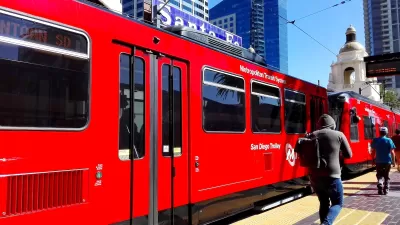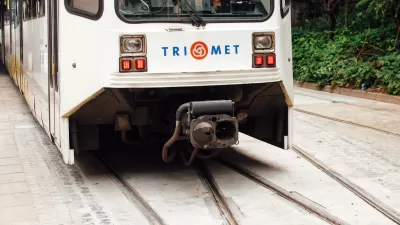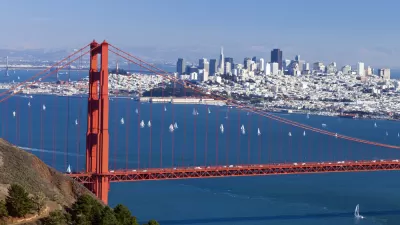The answer to the question in the headline is “not very.” Thirty years into the initial experiment, however, light rail has not been the game changer it was hoped to be.

Yonah Freemark details the complicated legacy of the light rail investments of the 1980s, which have not been very successful in increasing the share of trips taken on transit. Buffalo, Portland, Sacramento, San Diego, and San Jose opened light rail in the 1980s, “[yet] it doesn't take much digging to find that over the past thirty years, these initial five systems in themselves neither rescued the center cities of their respective regions nor resulted in higher transit use — the dual goals of those first-generation lines.”
“According to an analysis of Census data, in four of the five cities with new light rail lines, the share of regional workers choosing to ride transit to work declined, and the center city's share of the urbanized area population declined, too,” reports Freemark. San Jose was the only exception.
Thus, light rail investments do not automatically result in increased transit use. In fact, “Two of the initial light rail metros, Buffalo and Portland, had significantly higher transit mode shares in 1980 (7.9 and 9.7 percent, respectively) than they did in 2012.”
Freemark’s point is not to call for an end to light rail investments. Rather, he insists that cities cut back on the conflicting policies of continuing highway expansion, and develop a consistent transportation strategy: “Each region also built free highways during the period (I-990 in Buffalo, I-205 in Portland, US 50 in Sacramento, CA 54 in San Diego, and CA 237 in San Jose), and each continued to sprawl (including Portland, despite its urban growth boundary). These conflicting policies had as much to do with light rail's mediocre outcomes as the trains themselves — if not more.”
FULL STORY: Have U.S. Light Rail Systems Been Worth the Investment?

Planetizen Federal Action Tracker
A weekly monitor of how Trump’s orders and actions are impacting planners and planning in America.

Map: Where Senate Republicans Want to Sell Your Public Lands
For public land advocates, the Senate Republicans’ proposal to sell millions of acres of public land in the West is “the biggest fight of their careers.”

Restaurant Patios Were a Pandemic Win — Why Were They so Hard to Keep?
Social distancing requirements and changes in travel patterns prompted cities to pilot new uses for street and sidewalk space. Then it got complicated.

Platform Pilsner: Vancouver Transit Agency Releases... a Beer?
TransLink will receive a portion of every sale of the four-pack.

Toronto Weighs Cheaper Transit, Parking Hikes for Major Events
Special event rates would take effect during large festivals, sports games and concerts to ‘discourage driving, manage congestion and free up space for transit.”

Berlin to Consider Car-Free Zone Larger Than Manhattan
The area bound by the 22-mile Ringbahn would still allow 12 uses of a private automobile per year per person, and several other exemptions.
Urban Design for Planners 1: Software Tools
This six-course series explores essential urban design concepts using open source software and equips planners with the tools they need to participate fully in the urban design process.
Planning for Universal Design
Learn the tools for implementing Universal Design in planning regulations.
Heyer Gruel & Associates PA
JM Goldson LLC
Custer County Colorado
City of Camden Redevelopment Agency
City of Astoria
Transportation Research & Education Center (TREC) at Portland State University
Camden Redevelopment Agency
City of Claremont
Municipality of Princeton (NJ)





























